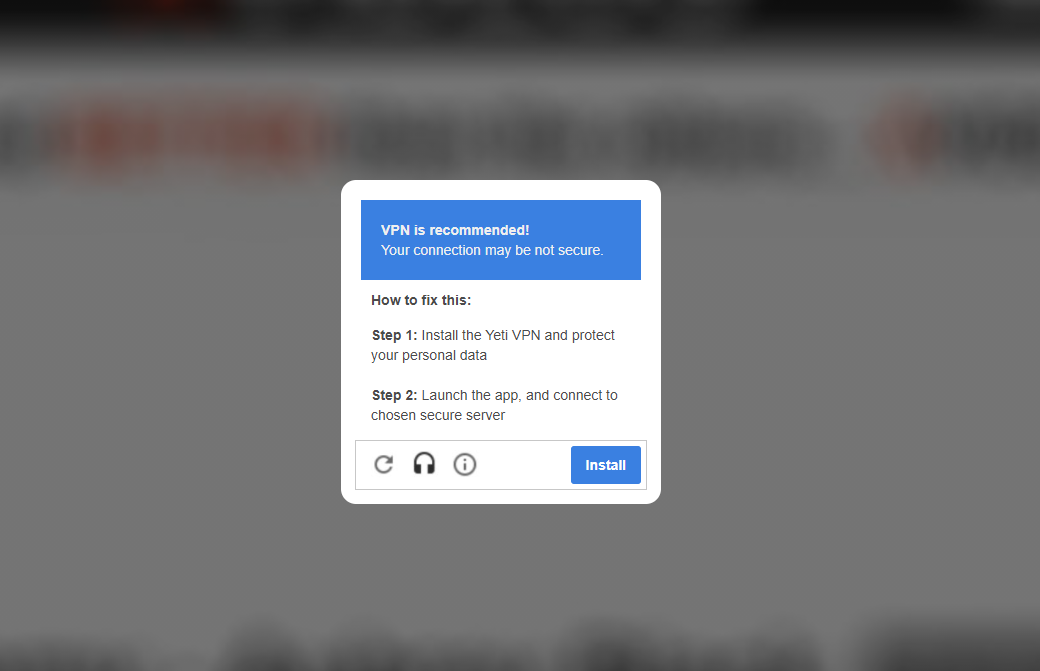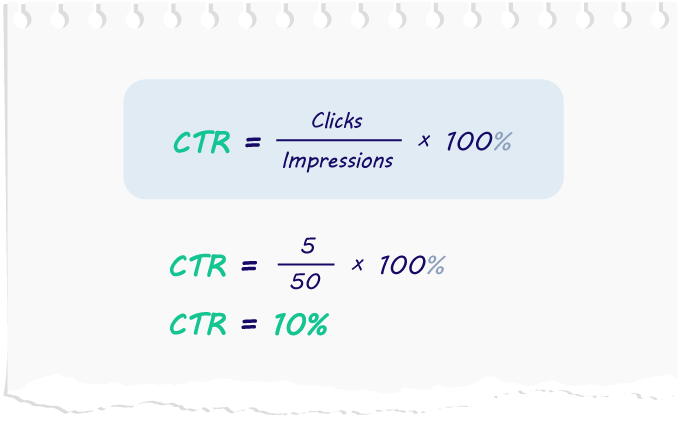Affiliate marketing is a varied field with many conversion flow types. There are a lot of methods of promoting affiliate offers and although we were not able to count them, we wouldn’t be surprised if the number reached a hundred… or more. And let’s not even get started about the offers because nowadays you can truly advertise just about anything online.
Consequently, there are many methods of earning affiliate commissions. Conversions can be scored in a multitude of ways and funnels can be as complicated or as simple as possible.
If you want to learn about different types of conversion flows and what data to pay attention to in different cases, read the article below and expand your affiliate marketing knowledge.
Types of conversion flow in affiliate marketing
Depending on what affiliate program you choose to join, the end goal of your affiliate marketing efforts will be different. The user journey is completely different in the case of offers where a purchase is what you want to achieve. On the other hand, there are affiliate networks specializing in the simplest offers with the goal of obtaining users’ most basic personal data.
Let’s dive into the most popular conversion flows so you, a beginner affiliate marketer, can understand how each user journey looks like and what you can do to improve it.
PIN Submit flow
PIN submit are predominantly mobile content offers that use an SMS billing flow. They’re common for downloads and adult offers but you can find flows involving a PIN code in almost any vertical.
In simple terms, after clicking on your ad, the potential customer will need to either enter their phone number or send an SMS message in order to receive a PIN code. The PIN code then needs to be entered on the offer page. Once that’s done, the user will have confirmed their interest in your offer and you have gained a conversion.
Of course, before the user travels to the offer page it’s usually recommended to warm them up to the offer with a landing page focused on the advertised product. Once someone gets hooked on what you’re selling, sharing their phone number really won’t seem unreasonable in exchange for the amazing thing that you’re advertising.
Although such offers work with traffic coming from any device, be it desktop, tablet, or a mobile phone, they are based on a carrier billing system. So, they’re not only inclined to perform better on mobile but they often require a 3G connection to work smoothly. They also usually fall into the category of low payout offers ranging from a couple of cents to a couple of dollars for a conversion.

CC Submit flow
Credit card submit flow is quite easy to decipher. In order to access the advertiser product or service, the customer has to share their credit card number. This conversion flow often requires users to fill out their contact information along with the credit card number.
Types of offers that use CC submit flow usually fall under the sweepstakes category. Other verticals include gaming, streaming, cams, finance, and education but also various kinds of free trials that can fall under just about any category.
What a user journey looks like here? Once a user clicks on an interesting ad, for example, for a streaming service, iPhone giveaway, or a free trial of an online game, they will be redirected to a lander (yes, you should prepare one) and once they realize how much they need it, they’ll fill in the information along with the credit card number to enjoy the service or a game.
Sometimes, the users will give a number of an expired or stolen credit card and that’s why affiliate conversions coming from such offers shouldn’t be celebrated right away. An affiliate network always needs to run a check to make sure that the leads are valid. The way that check is done and how long it takes depends solely on the affiliate network.

SOI
Single Opt-In offers might make up the majority of affiliate marketing offers in general. They are also the simplest and thus recommended to beginners with small budgets. Although the single opt-in conversion process is characteristic of sweepstakes and lead generation offers, once again, you can find offers like these for any vertical.
Single opt-ins require the least sophisticated marketing strategy and although affiliate conversions will earn you the least amount of commission, some offers can have higher payouts as well.
A typical SOI offer will be a sweepstake offering users a chance to win something in exchange for their email addresses. Sometimes there will be a basic contact form to fill in and sometimes a small field for the email address is all that’s needed.
These offers are perfect for beginner affiliates simply because they will appear to any audience regardless of gender, nationality, economic status, or interests. Everyone wants to win products and vouchers for free and sharing your email address is a no-price to pay. Whichever ad networks you work with, you can be sure they have traffic that will work with SOI offers.

DOI
Double Opt-In offers are basically SOI offers with an additional step. They are common in the same verticals and frequently the offers for SOI and DOI customer paths are nearly identical. The only difference is that in the case of double opt-ins, the interested party needs to click a confirmation button.
So, a typical user journey would include signing up for something (giveaway, sweepstake, dating site) and then having to check your email and click on a special link/button to confirm interest in the offer. Such offers are just as common in CPA affiliate networks as SOI offers and their payouts have a similar range although with a higher max value.
Conversion rates here are slightly lower because not everyone who shows interest in the product will remember to check their email and click the confirmation button. Still, these are one of the easiest offers to begin with.

CPI
Cost per install is not only a cost model but also a conversion flow. As the name suggests, the goal here is to convince a user they need to download and install an application. The advertiser only receives the conversion once the app gets installed. Sometimes, this model of user journey makes a stop at the ‘download’ level as well as the ‘sign up’, ‘free trial’, and ‘sale’ levels.
According to a marketing expert from the STM forum:
…desktop CPI is pretty good although unluckily volume is declining the last years.
When you are willing to put some upftont money on the table it´s also very rewarding to run CPI offers on MAC.
Best payouts are mostly in US so it´s very competitive and traffic is expensive but once you gain traction it can be really worth it.
CPI offers obviously dominate the mobile apps/utility, extensions, downloads, and software verticals but you can spot them among other niches such as finance as well. They are fairly common and convert well with pop traffic. On average, the payout ranges from a quarter of a cent to a couple of dollars.

COD
Cash on delivery offers advertise products that can be purchased online but paid at the moment of delivery. Although it’s called cash on delivery, the involvement of cash is optional and other payment methods during or on delivery are perfectly acceptable as well.
COD offers dominate the nutra field and quite often include such products as weight loss pills, beauty products, supplements, vitamins, enhancers, skincare, fat burners, and so on.
The flow of a cash-on-delivery offer is more complicated than the flows discussed above. An interested customer needs to engage with a landing page or an offer page and then order the product. However, to minimize the returns, companies working with such a business model, always engage a call center to help verify the purchase. So, just after ordering a product, customers will receive a phone call asking to confirm their purchase. Once they do that, the product is dispatched and paid for upon arrival.
Although the flow might seem problematic it really is not. Product websites often inform people that this is how purchases are made and sometimes a call button will be integrated within a website for a smooth experience. All affiliates need to do to ensure a sale is to create a compelling landing page (advertorials are highly recommended) and ensure the offer runs during the call center’s business hours.
COD offers are usually high payout and therefore not recommended to beginners or intermediate affiliates with low budgets.

First Time Deposit (FTD)
First Time Deposit offers are with no doubt the most advanced out of the available conversion flows. As the name suggests, the end goal of FTD offers is for a user to make a deposit. That’s why such offers are common for forex, crypto, gambling, binary, and all kinds of trading websites.
Your job as a media buyer is to advertise services, websites, or programs that offer customers the possibility to play with money. Hence, the key point of your campaign is to make sure that customers are willing to make a deposit on the advertised website. Although registrations might be tracked, this is only for the purpose of optimization. You’re only getting paid for a deposit.
Quite often to be accepted into the program or service a user needs to go through a verification call. That alone makes the conversion process the most complicated which leads to lower conversion rates. There is a plus side to running these offers though. The payouts average hundreds of dollars and it’s not that hard to find an offer for $1k or more.
Again, more effort is required to make the conversion. You should not only use high-quality descriptive (article-like) landers but also run your offers with the highest quality traffic both from advertising networks and other sources such as Facebook.

How are mobile content offers different from regular offers?
Offers described as mobile content are usually based on carrier billing. Phones that use a 3G connection while surfing the web quite often make it possible to use the SMS (MO/MT) billing flow. This means that affiliate sales are added to a person’s phone bill and there’s no need for sharing credit card data or transferring money.
Such affiliate marketing offers can belong to any vertical and use different flows. They convert better with mobile traffic although sometimes the performance is reasonable with desktop too. Here are two additional mobile conversion flows.
Click2sms
In click2sms offers, otherwise called MO flow, a conversion is counted upon sending a paid SMS message. The majority of such offers are mobile-only. Although click2sms offers are possible for any vertical they are most commonly used for dating offers.
Additionally, you should pay attention to the offer description in an affiliate network. Sometimes promoting such offers is restricted to a certain mobile operator and if you target the wrong kind of audience your clicks won’t be counted.
Click2call
Click2call (IVR) flow is very similar to the click2sms flow. The only difference is that instead of sending an SMS message, the user needs to make a call for you to score a conversion. Again, web traffic is not the preferred method here and most networks suggest or require mobile traffic only. Although many products can be advertised that way, again, click2call flow is most popular for dating offers.
Affiliate marketers need to watch out for traffic and carrier restrictions as well as the business hours of a call center servicing the offer provider. It’s worth remembering that different countries have different time zones so if a traffic source gives you the option to daypart, you should make sure you’re looking at the right time zone.
Lastly, if you have any problems tracking conversions for campaigns with a complicated flow you shouldn’t hesitate to ask your account manager. Tracking clicks is generally easy but tracking calls (if you have to) can be tricky.
Learn more about mobile advertising and how to run mobile content offers effectively.

What data should you pay attention to?
Because conversions can be scored in a variety of ways, the key metrics for measuring the performance of your affiliate campaign might differ on an individual basis.
Some offers might require media buyers to prepare an advanced landing page that looks like an article and talks at lengths about the benefits and miraculous properties of a diet supplement. Other offers will require minimum content effort and you’ll be able to score a sale for no other reason than choosing the right targeting for your campaign.
Let’s discuss the two of the most important metrics in affiliate marketing to see what exactly you should pay attention to.
Conversion rate (CR)
Conversion rate is expressed as a percentage and tells you what part of your ads leads to conversions. There are types of offers that will naturally score more conversions if you choose to use a landing page and there are some that will be negatively impacted by the use of any landing page at all.
In general, the correlation between conversion rate and conversion flow is simple. The simpler the user journey the higher the conversion rate. There is content that appeals to a very wide audience, for example, sweepstakes and vouchers. Here the most common path to conversion will be single opt-in, double opt-in, or SMS billing flow. The low effort needed to convert makes for a much higher average conversion rate.
Other things that affect the CR:
- The quality of your landing page
- The language of your offer/lander vs. country language
- Relevance of the offer to the current trends
- Time of the year, days, and hours at which you run your offer
- Landing page loading speed
- The complexity of the user journey

Click-through rate (CTR)
Click-through rate refers to the ads and landing pages you use before sending users to the designated website or product page. Sometimes it’s up to you to build a landing page or rip one from spy tools. Sometimes an affiliate program or network will give you the best landers to use or at least inform you about the types of pages that make users convert.
The click-through rate affects the conversions because if people aren’t willing to click on your creatives they won’t even get to the affiliate website.
What affiliate marketers can do to increase the click-through rates of their campaigns?
- Test different variations of ads/landers and pick the one that works best
- Optimize your landers for each device separately (mobile phone vs. tablet vs. desktop device)
- Play on the fear of missing out and offer time-limited promotions
- Beware of creative fatigue and refresh your creatives whenever you see a drop in CTR
- Make the CTA button clearly visible and accessible
- Test various angles and do your best to convince users why they need the product

Conclusions
Affiliate marketing makes any aspiring advertiser faced with a number of choices. The number of different tools to pick from, affiliate programs to sign up for and campaigns to run is so big, it’s hard to pick just one.
While the overwhelming number of options might seem like making affiliate marketing work is an extremely difficult task to do, it’s not at all the case. The Internet is full of comprehensive guides and tutorials so even the most inexperienced advertisers can score conversions from their first campaign.
But in order to score conversions you need to first understand, what does it mean and how does it happen. Hopefully, you’ve learned just that from this article.
Are you ready to score conversions?
Join Zeropark Now
Magdalena Bober


